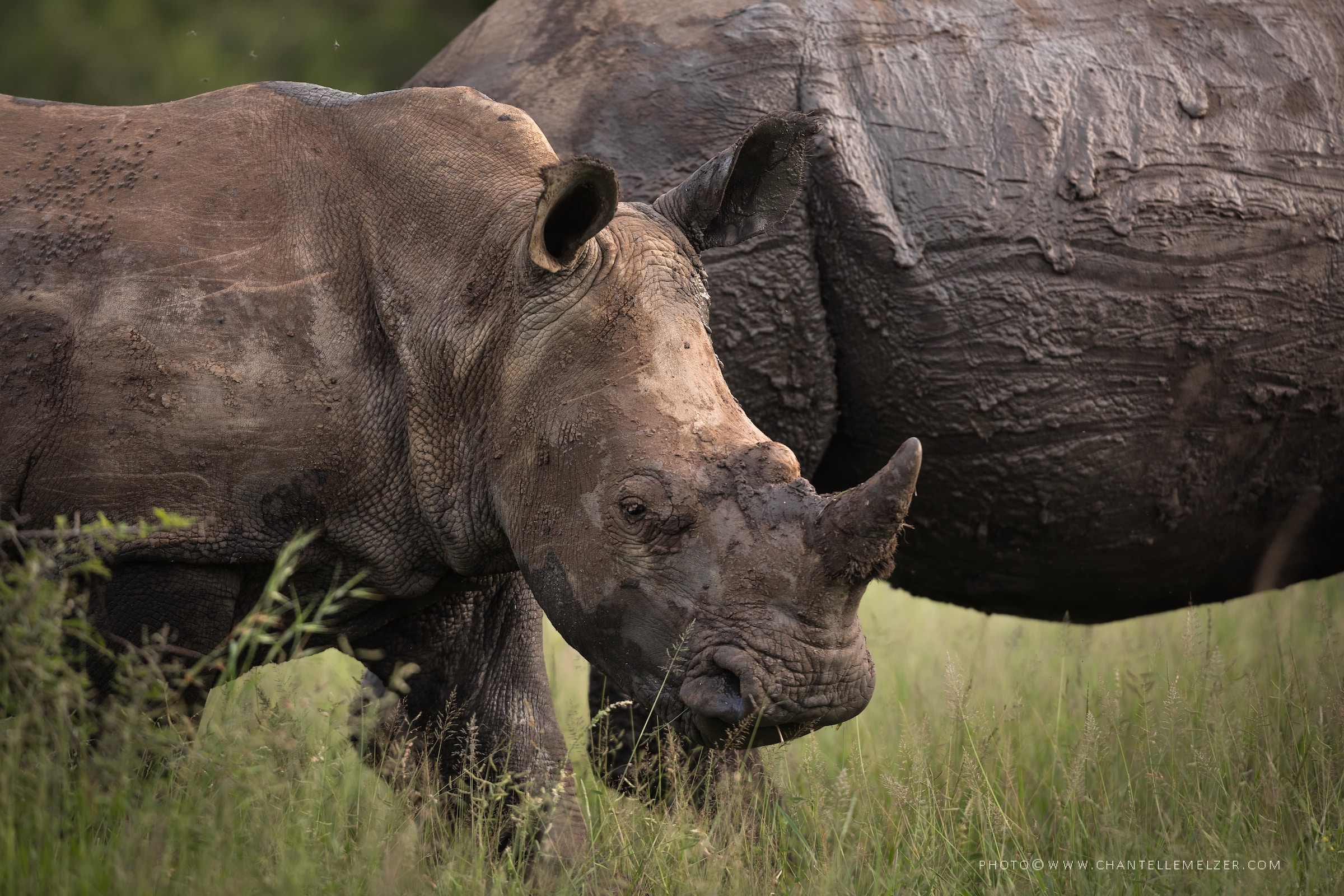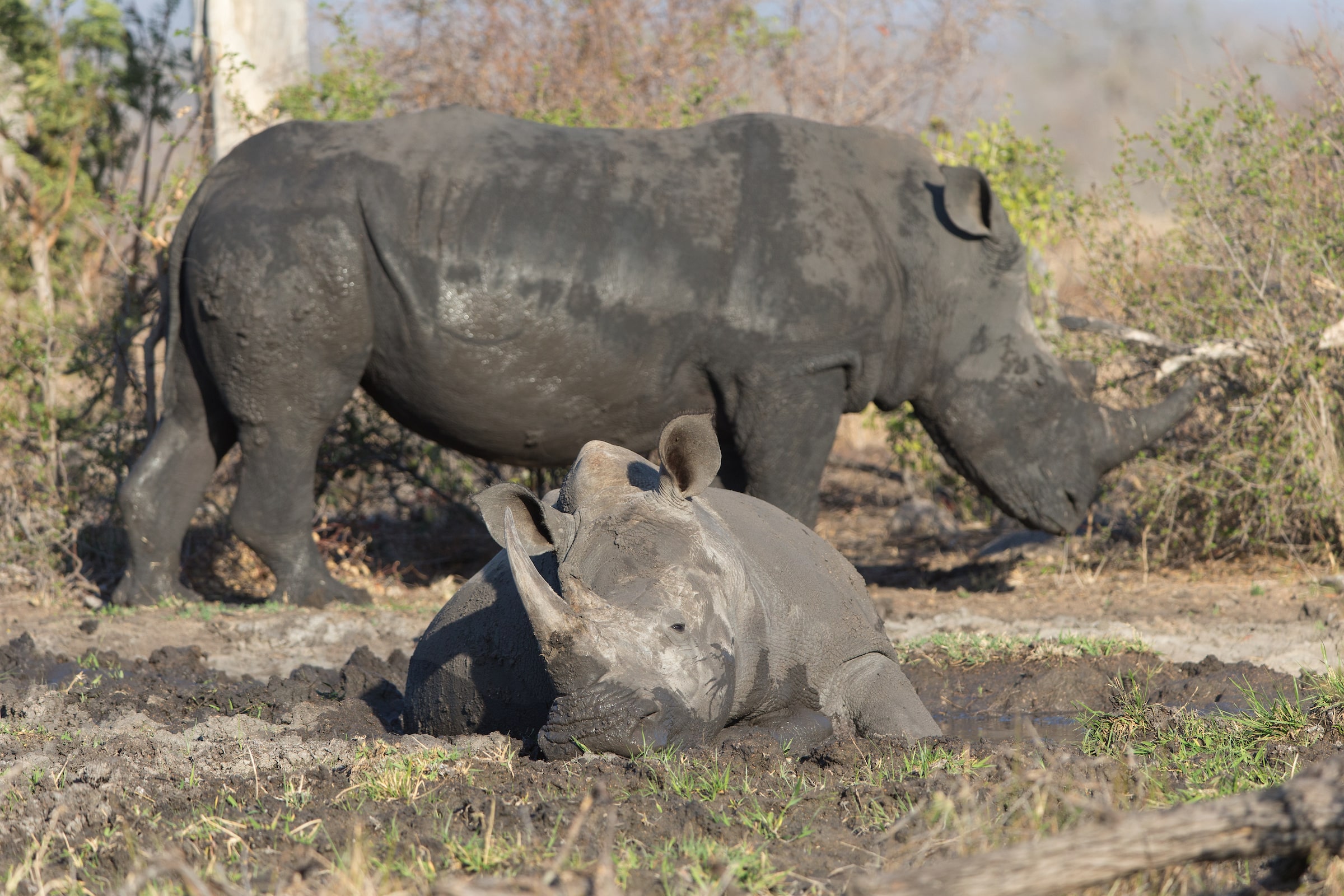Like us, rhinos communicate with each other through messages, establishing a social network among their population. However, instead of sending texts or emails, rhinos will often send each other messages through their dung.

Rhinos consume a wide variety of foliage, including grasses, bushes, shrubs, and any kind of small tree, depending on the species. Eating so much vegetation leads to a lot of defecation. The variety of their diet adds “flavor” to their poop, and this individual flavor is key to how they communicate. Each rhino’s unique smell contains a lot of nuance and tells other rhinos a lot about each other.
It is common for many animal species to use excrement as a way to communicate. For example, we often observe dogs sniffing where another dog has urinated. But rhinos will defecate in the same location as other rhinos, creating communal dung piles known as middens. Middens are like a tower that sends out signals or “messages” to other rhinos. When a rhino approaches a midden, they will sniff through the pile, trying to learn information about the most recent contributor. Dung can provide rhinos with insights on age, health, and even the mating status of their peers.

Once a rhino is done investigating the midden, it will usually add to it. In order to make their personal poop messages stand out in the pile, they might fling their dung around or drag their feet through it, so the message is able to travel beyond just those that approach the midden. When rhinos continue on their way, they will travel with the dung on their feet, leaving even more messages through their tracks.
Rhinos aren’t the only ones who learn things from rhino dung—conservationists can read these smelly messages too. Analyzing rhino dung is a great non-invasive way to learn so much about rhino populations, and helps them improve ways to conserve them and their landscapes. The most valuable use of fresh dung is DNA, and conservationists will use this to verify the presence of rhinos in certain landscapes where they are not as commonly seen. It is also used to identify specific individuals and can even lead to management decisions on which rhinos to relocate to new areas.

